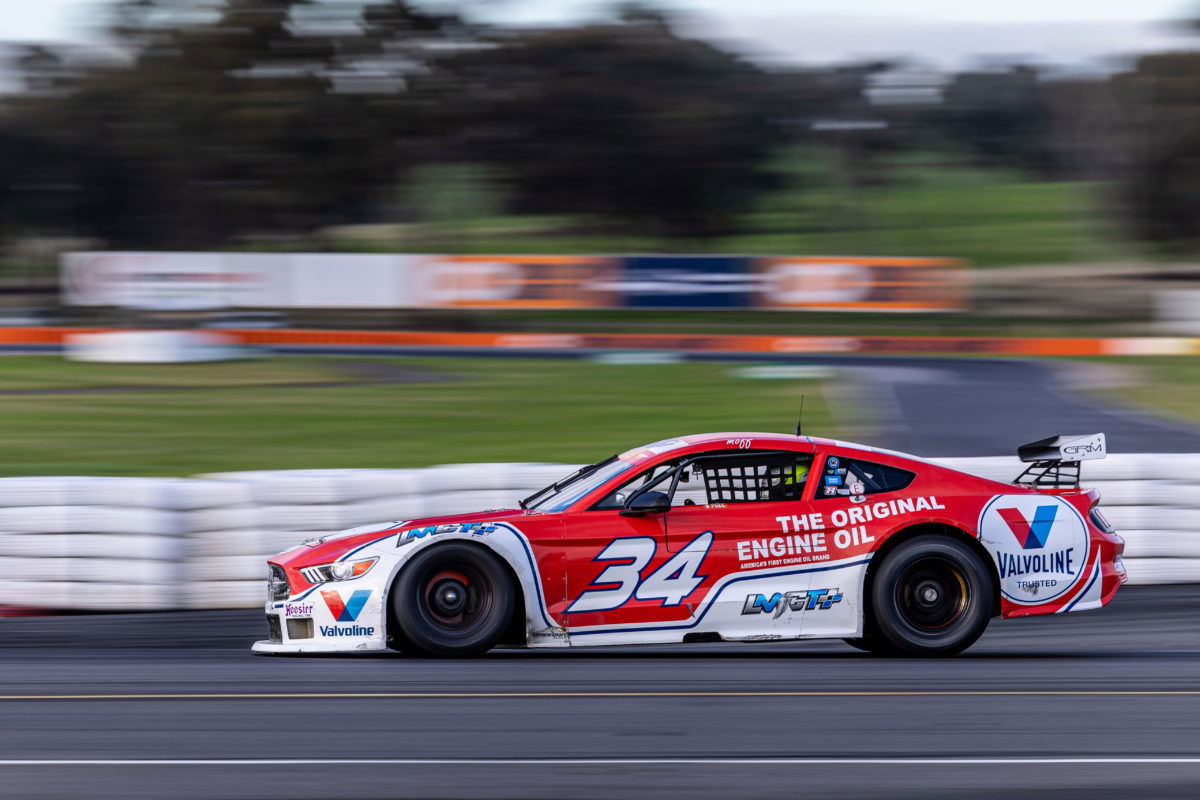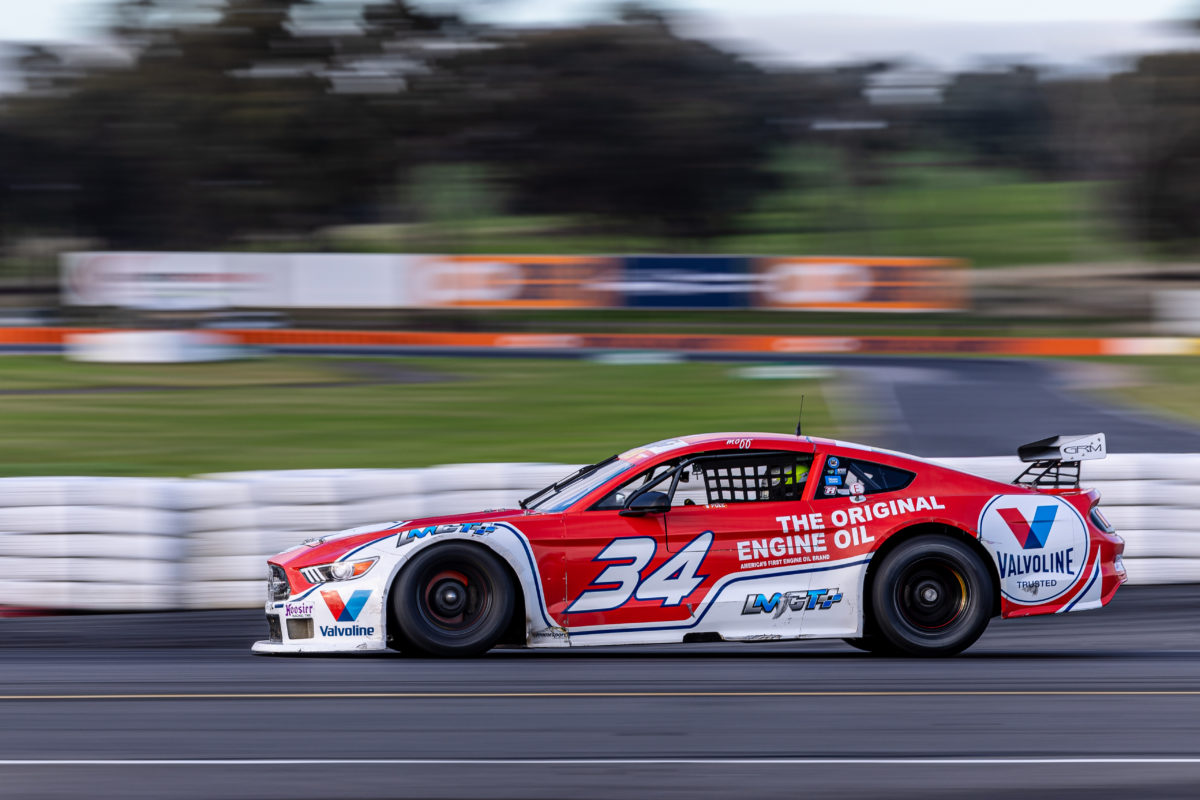

Two Garry Rogers Motorsport entries have been disqualified from Round 3 of the Trans Am Series after being found guilty of technical breaches.
GRM cars had also raced with the unapproved support plate in Rounds 1 and 2 of the season, in February and May respectively, although the finding of a breach only applies to Round 3 due to a statute of limitations.
James Moffat will thus keep the two race wins he achieved in Round 1 at Symmons Plains but will lose a sixth, third, and second place from Round 3, and hence the series lead to Elliot Barbour.
Moffat’s GRM team-mate Lochie Dalton, who was second in the series standings, loses the clean sweep which he claimed in Round 3.
The Investigatory Tribunal found that, notwithstanding GRM raced with approval for the modifications from Motorsport Australia, series owner Australian Racing Group, and vehicle importer PBR Distributions, it was guilty of breaching Rules T2.1 and T2.3 of Trans Am regulations, which prohibit modification of vehicles and use of non-controlled components (unless specified otherwise).
Given those are technical regulations, and given the Investigatory Tribunal found no reason to depart from the usual practice of disqualification for technical breaches, that is the penalty which it has handed down.
GRM had been ‘testing’ the throttle pedal support plate which was subsequently approved for use by other competitors before Round 4 of the season at Queensland Raceway in August.
However, while officials, category management, and the party treated as the vehicle manufacturer for the purpose of the regulations (PBR) were aware of the modification, rivals were kept in the dark until July, between Rounds 3 and 4.
Curiously, it appears less attention was given by the Investigatory Tribunal to evidence which suggested that GRM had also adjusted the height of the throttle pedals by lengthening the throttle stop, although that evidence was referred to in the official findings and recommendations (finalised last month).
It would seem a pertinent point given one of the key benefits of the modification(s) was to enhance the ability of the driver to heel-and-toe (right-foot braking).
The saga has raised questions about fairness and governance in the Trans Am Series.
Those issues are all the more sensitive given GRM Director Barry Rogers owns a 75 percent stake in ARG.
That is, the series owner is also the boss of the team which was testing parts without the knowledge of rivals.
Governance was not explicitly part of the terms of reference, although the Investigatory Tribunal stated in its official findings and recommendations that there was a “failing” with respect to communication with competitors.
The tribunal has now determined that “GRM must have known that the other competitors would not have the use of the Modifications and therefore GRM would take any competitive advantage that the Modifications might bring.”
However, it stopped short of concluding that they were performance-enhancing, stating, “the Investigative Tribunal was unable to determine whether or not a performance advantage was achieved.”
That (non-)conclusion was reached despite one of GRM’s own reports on the modifications stating, “The drivers were generally very happy with the modifications to the pedal box,” and, “They reported that they had no issues with downshifts, axle tramp, rear locking etc across the entirety of the weekend, not typical of what has been seen previously.”
The ability to heel-and-toe is a significant issue in the debate about performance enhancement given it is difficult to achieve in a standard TA2 car (as imported from the United States) due to configuration of pedals and flex in the firewall.
Rival entrants Paul Morris and rival driver Barbour provided evidence of the benefits of right-foot braking, as did Supercars Championship leader Brodie Kostecki in a written statement to the tribunal.
One insider also pointed out to Speedcafe that Shane van Gisbergen appeared to benefit from his skill with respect to right-foot braking when he made his NASCAR Cup Series debut in a field otherwise comprised wholly or predominately of left-foot brakers.
On the other hand, Motorsport Australia Technical Manager Scott McGrath took the view that the modification (throttle pedal support plate) was for driver comfort and Category Technical Advisor Cameron Sendall, from PBR, opined that it was not performance-enhancing.
GRM also submitted that neither Dalton’s car nor a sister entry were fitted with the by then optional throttle pedal support plate in Round 4, “A choice that we would not have made if the change would give us a performance improvement.”
GRM had also submitted that Dalton has been exclusively a left-foot braker this Trans Am season, although that would seem to undermine its contention – or at least not bolster it – that the modifications were not performance-enhancing for those who have the ability and/or preference for right-foot braking.
Regardless, with the breach having already been established, the standard punishment was issued.
The controversy is not the first involving GRM and a possible breach of technical rules in the Trans Am Series, with a technical bulletin issued just over a year ago to ban the trick of deliberately loose roof struts, which may or may not have produced an aerodynamic advantage.
In the most recent, fifth round of the 2023 season, last month at Sandown, where the throttle pedal support plate was legal and known of to GRM’s rivals, Moffat won the first two races and Dalton took out the latter.
Round 6 takes place at Sydney Motorsport Park on November 3-5.




















Discussion about this post